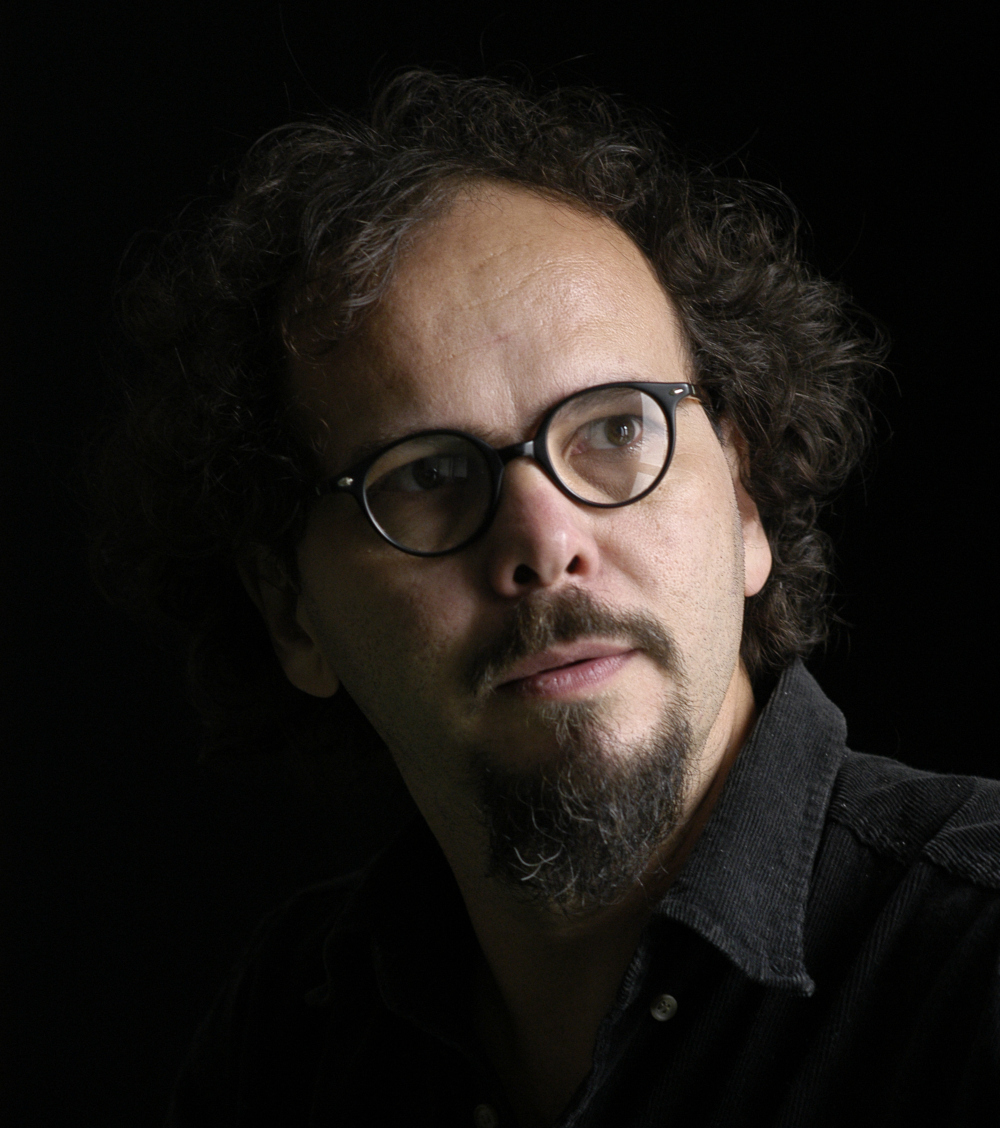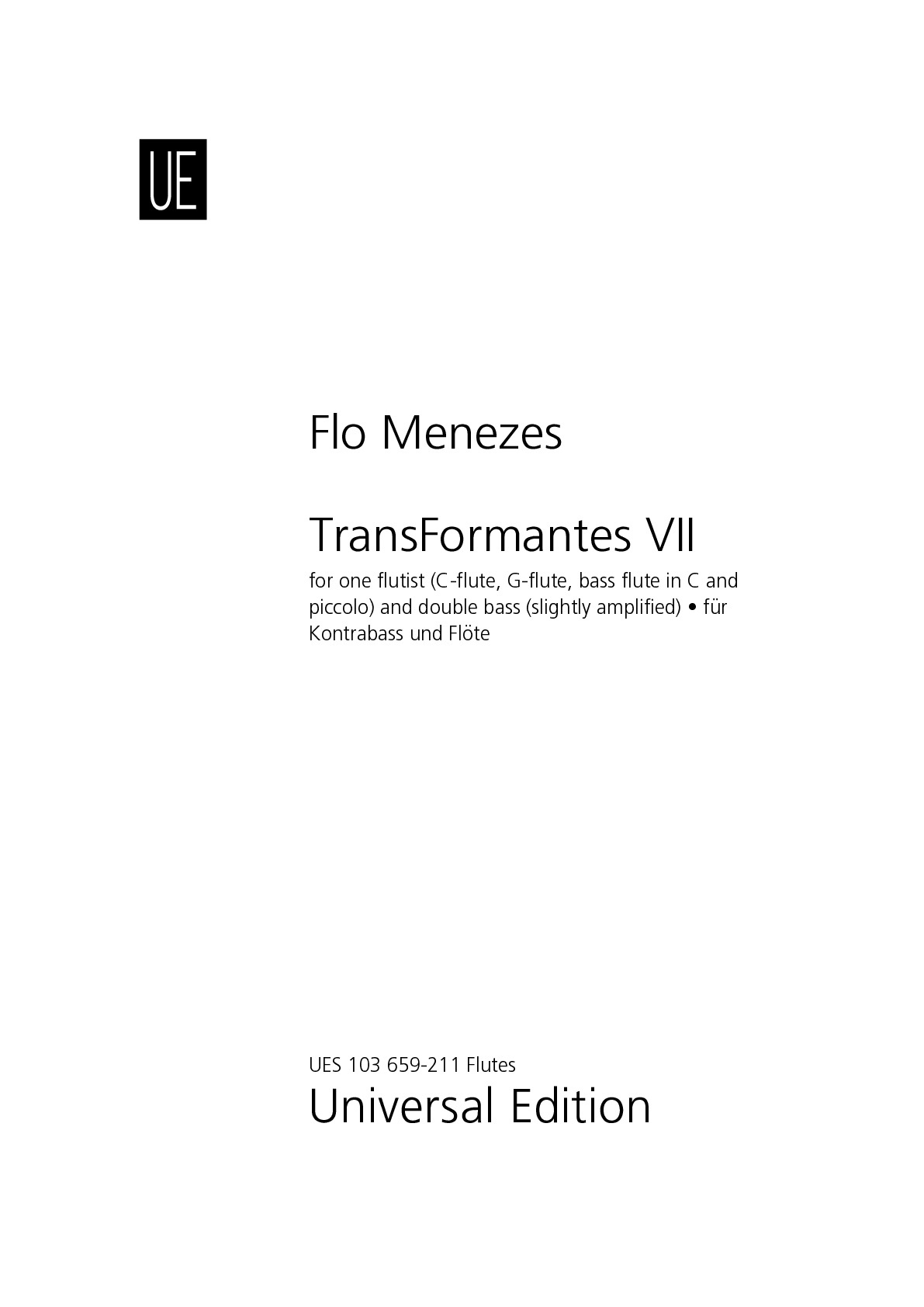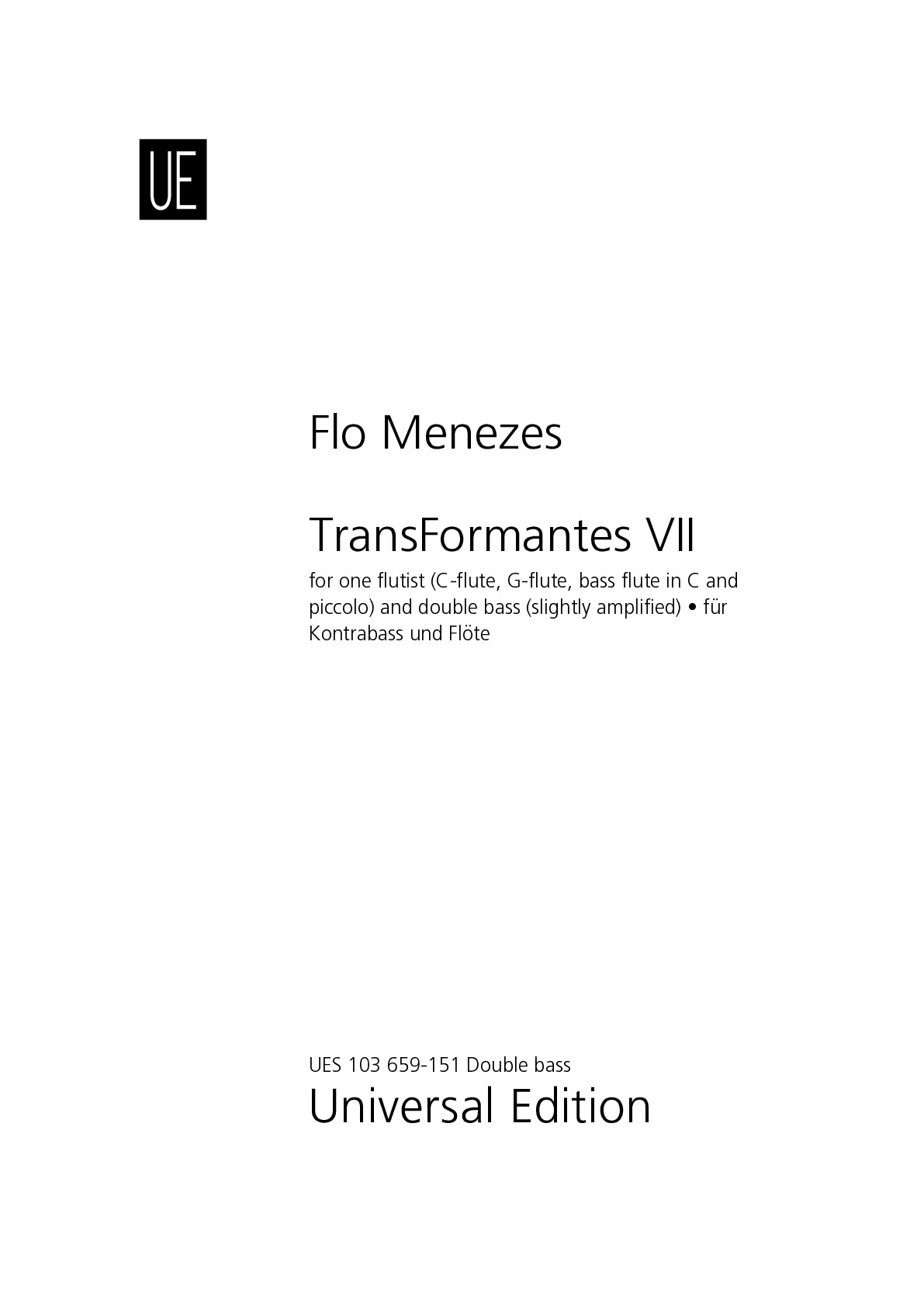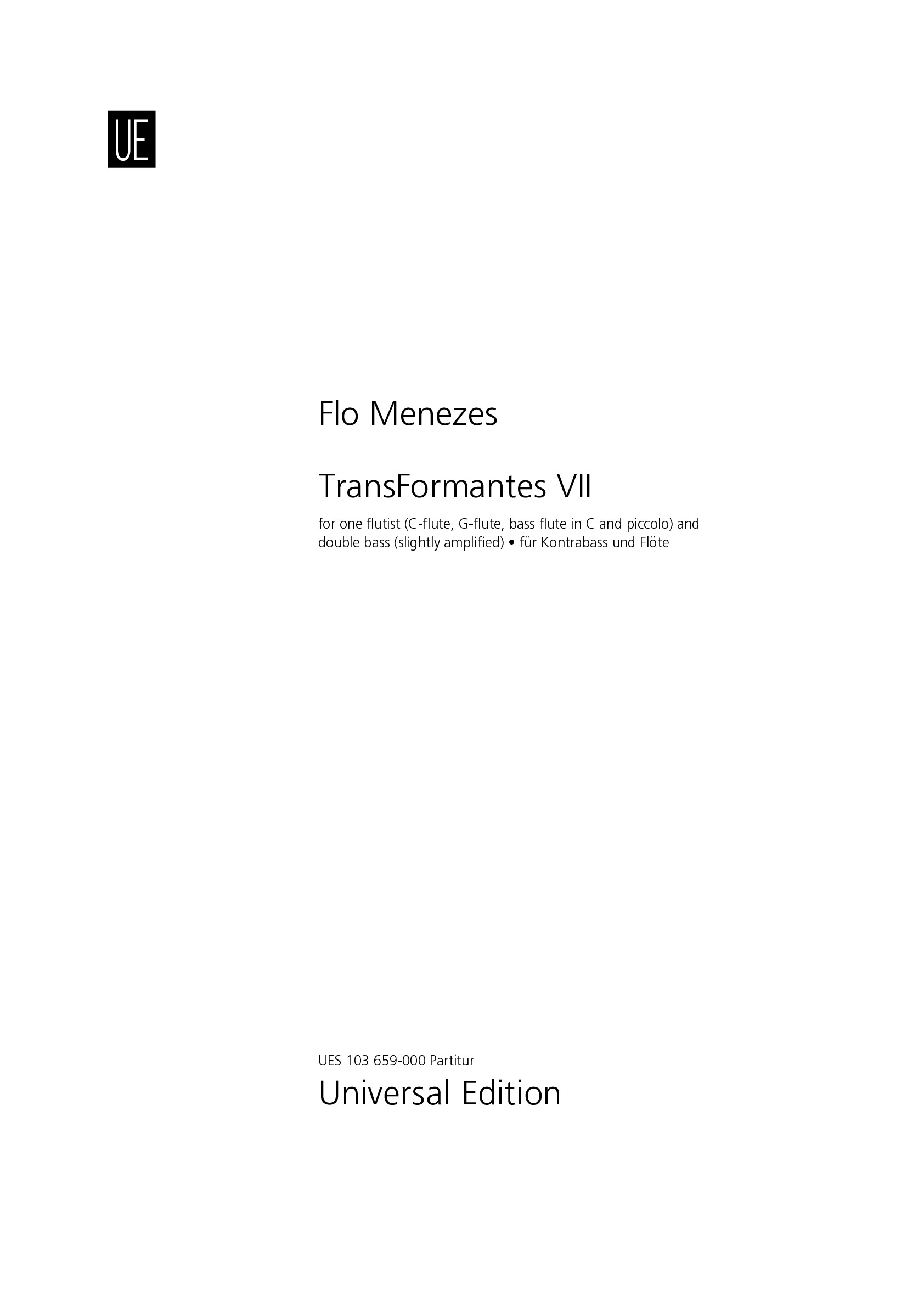

Flo Menezes
TransFormantes VII
Duration: 18'
Instrumentation details:
flute
double bass
TransFormantes VII
Translation, reprints and more



Flo Menezes
TransFormantes VIIOrchestration: for one flutist (C-flute, G-flute, bass flute in C and piccolo) and double bass (slightly amplified)
Type: Dirigierpartitur
Sample pages
Audio preview
Video
Work introduction
TransFormantes VII is part of the series of works entitled as such because certain structural events occur in a protruding way throughout musical time, and this in two possible ways:
• Either some formal event that is distinguished from the others, such as protrusions of form (formants, in analogy to the acoustic formant, a region of privileged resonance of a given sound spectrum) that occur from time to time throughout the musical form, transforming it radically (as in TransFormantes (I) (1983), TransFormantes II (1995));
• Or the work is made up of these prominent formal elements, these Formants, which spread throughout the concert or a good part of it, involving the other musical works present in it (as in TransFormantes III (1997) or TransFormantes IV (1998), for example).
In the specific case of TransFormantes VII, the work can be carried out in two ways, that is, its performances can cover both of these possibilities:
1. Either its three Formants (Formants 1, 2 and 3) must be distributed throughout a recital (whether it consists only of works for Flute or works of different instruments), so that Formant 1 is placed exactly at the beginning of the recital, Formant 2, right in the middle or just before the break, and Formant 3, right at the end of the concert:
2. Or the whole piece is played with its 3 Formants in an uninterrupted way – and in this case the indications between [ ] of [attacca] in bars 29 and 89 are valid –, that is without the separation of its Formants 1, 2 and 3, as the first piece just after the recital intermission. In this case, Profiles A and B (indicated in the score) acquire their function as Formants (a function that they have anyway, even when Formants 1, 2 and 3 are separated during the recital).
In TransFormantes VII there are passages written either in traditional or – more rarely – in proportional notation. But when traditional notation is used, there is a quite great amount of bar changes, with many passages containing constant “metric” changes. The rhythmic figures are also of great difficulty, and inside the metric structure there are many passages in which a ritardando are written inside a “normal” rhythmic figure, which causes a great flexibility in the rhythmic gesture.
But in spite of many details in the figures between the instruments, in which precise synchronization should occur, there are many passages (punctuated in the score) in which the synchronism between the two musicians is relativized and the bar structure serves just to give an orientation and to organize the temporal structuring of the composition. It has generally neither a metric function nor it serves to any articulation in the traditional meaning of metric. The writing of TransFormantes VII – as for my works in general – is rather concerned with durations, not exactly with pulses.
Therefore, the musicians should rigorously study the rhythmic patterns and figures in order to acquire a relative “freedom” in relation to them, drawing their attention rather to gestures than to the exactitude of the rhythmic figures. What Arnold Schönberg wrote in a letter to Josef Rufer in December 1923 about the pitches in his Pierrot Lunaire is also metaphorically valid for the rhythmic figures in my piece: “Sie sind ‚gut’ zu berücksichtigen, aber nicht ‚streng einzuhalten’” (“They are important to consider but not to be ‘kept strictly’”).
